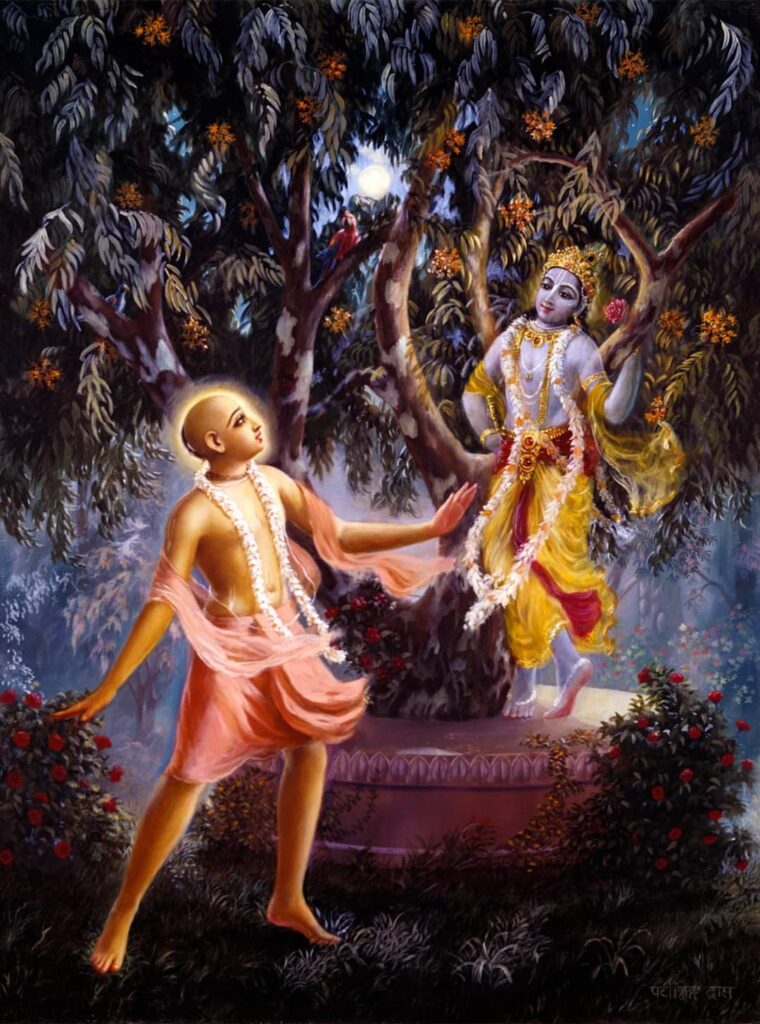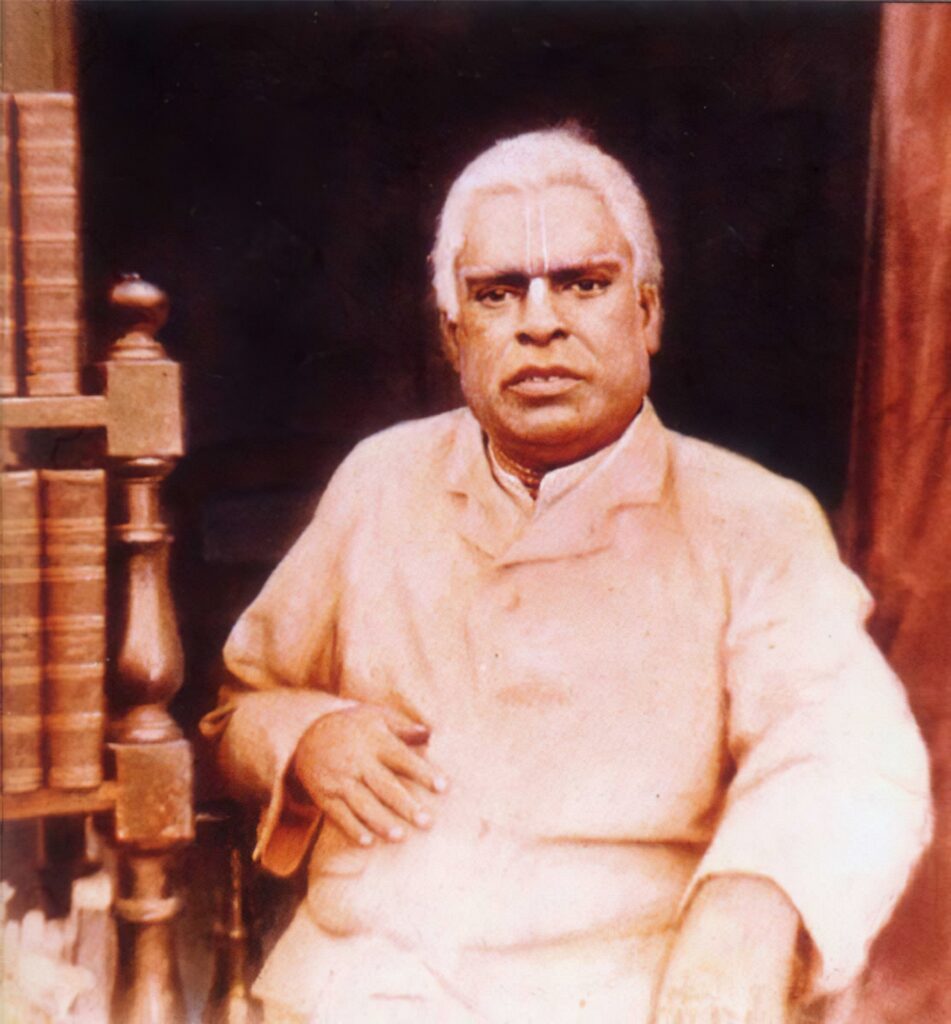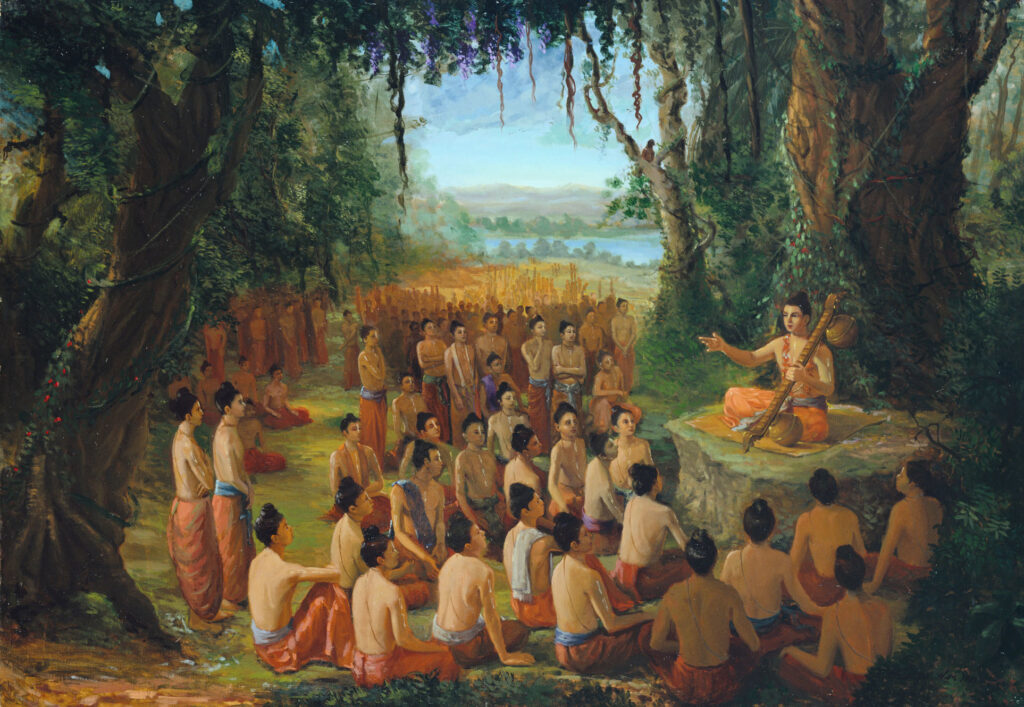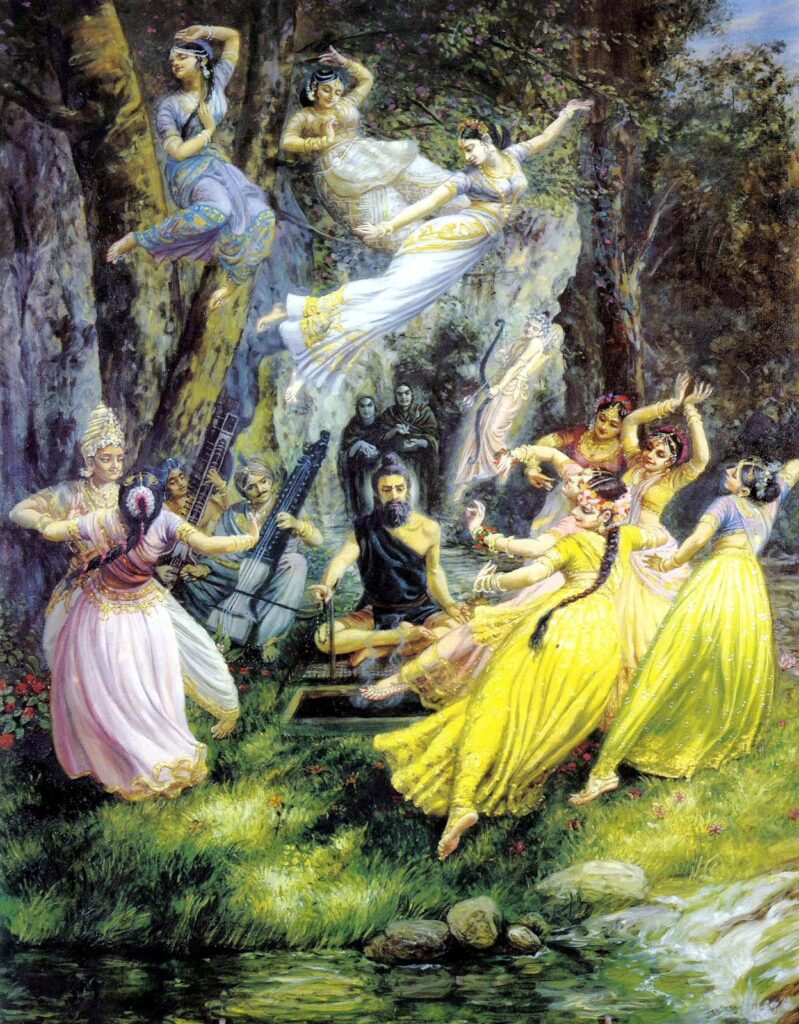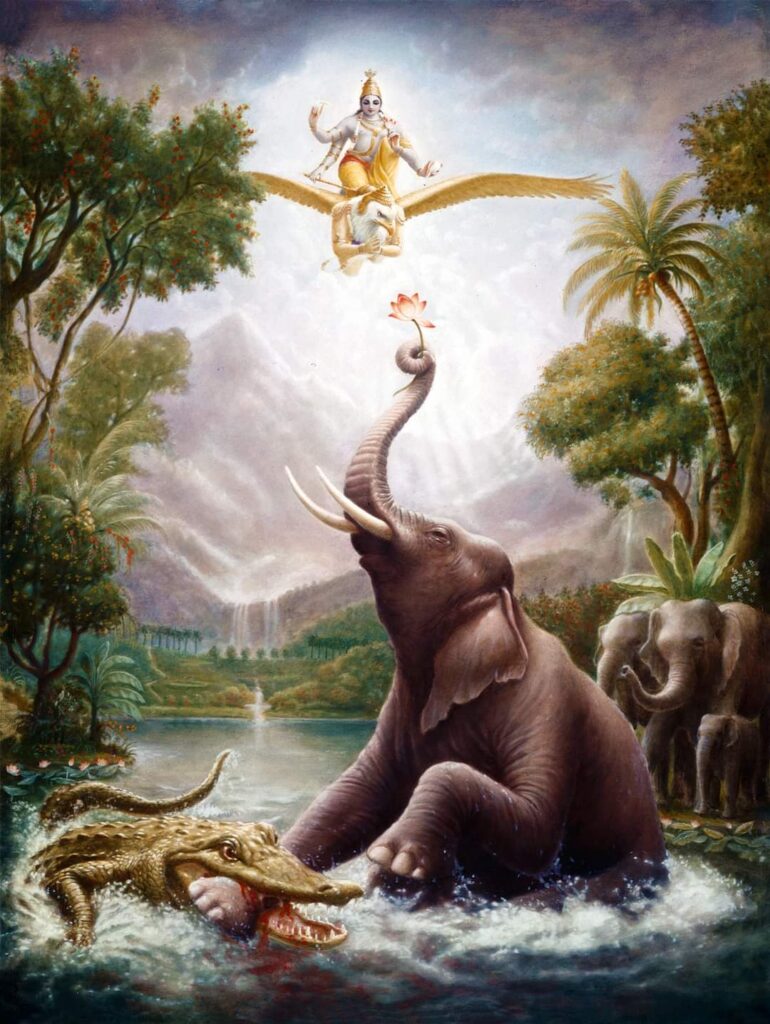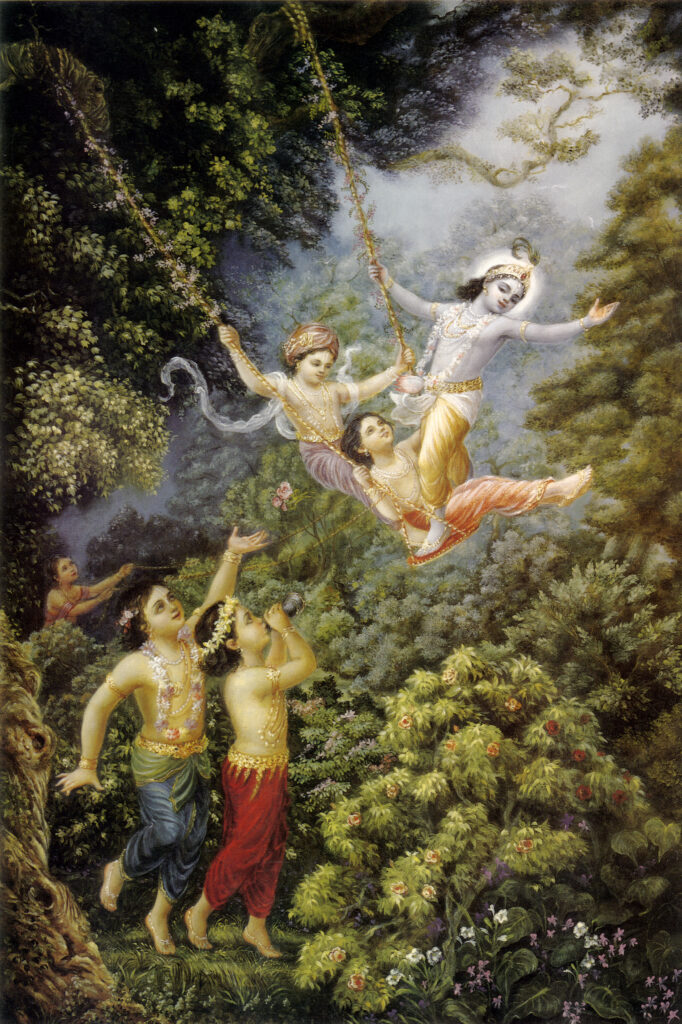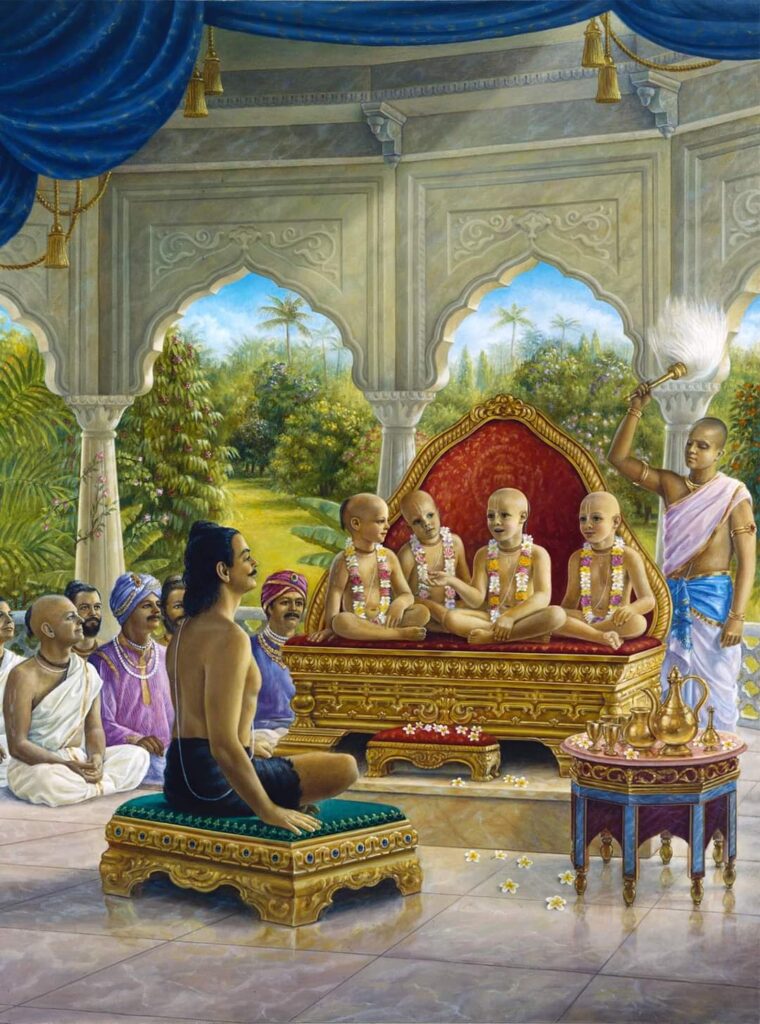We all understand that the ultimate goal for all of us is to attain pure love for Krsna. Srila Prabhupada explains that service to Krsna is the original, eternal position of the soul, and this original consciousness is simply covered by different layers of material contamination, in the form of the false ego, the mind, and so on.
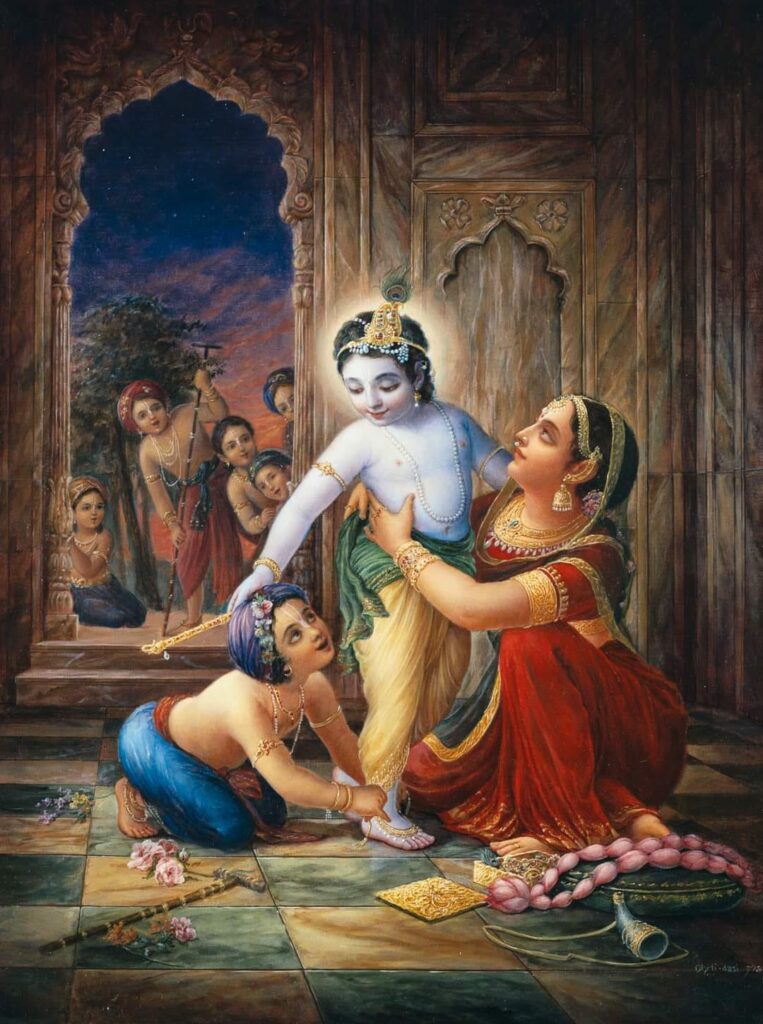
The problem is that somehow or other we become attached to these coverings, and we remain attached to it even after we start practicing Krsna Consciousness. There is always the possibility one may be able to get rid of his or her material conditioning quickly by sincerely chanting the holy names, just like many can quit smoking by simply stopping, but most of us need to go through the gradual path of reconciling our perceived material needs and our spiritual practice. We need thus to find ways to harmonize our material needs with the practice of Krsna consciousness, being able to advance in the spiritual path while still dealing with the material world and accepting different types of roles and responsibilities.
Generally speaking, there are two paths to self-realization:
One is Nivritti-marga, the direct path, which is achievable for the ones who are bringing very strong realization from previous lives, receive special mercy or are especially determined, etc. The second path is Pravritti-marga, which is the path for… well, everyone else.
The path of Nivritti-marga is characterized by celibacy and austerity. This is the part for the ones who already learned their lessons and don’t want anything to do with this world apart from helping others to advance in the spiritual path. That’s what makes this path so hard: it requires us to abruptly break with our conditionings, which is not something many of us are prepared to do on short notice.
The path of Pravritti-marga is based on family life and pious life. This is a path for the ones who still have material desires and need an environment where he or she can satisfy such material desires to a certain extent. The idea is to live a balanced life, so one can be peaceful and be thus able to advance in the spiritual path.
These material desires can be divided into three groups: desire for gross sense gratification, desire for material possessions (house, furniture, car, etc.), and desire for relationships, which also includes things like fame, status, and so on. In people with a gross consciousness, the desire for gross sense gratification as well as for material objects may be very strong, but it gradually diminishes as a person evolves in the spiritual path. Instead, the need for relationships gradually becomes stronger.
For most of us, that’s the real problem that needs to be addressed. When the need for relationships is not fulfilled, we tend to fall back into gross sense gratification, which is not very positive. We can see cases of men who would leave their families, trying to become renounced, just to fall down into having an illicit sexual relationship with some other lady later on. Unless one is truly on a renounced platform, it’s much safer to cultivate healthy relationships than false renunciation. This brings us to the path of Pravritti-marga, which is centered around the idea of cultivating material relationships, but doing it in ways that also help us to advance spiritually.
The problem with relationships is that they demand the cooperation of other people. Someone has to play the role of our wife, husband, children, and so on. In this way, one who is traveling across the path of Pravritti-marga needs the cooperation of many people to be able to satisfy his desires for relationships and thus achieve success in the path. A child needs to have good parents, a wife needs to have a good husband, a husband needs a good wife, parents need good children, and so on. One goes through these different stages in life in succession, and the combination of healthy relationships and spiritual knowledge allows one to gradually develop detachment.
One who has loving parents can grow in a healthy way and enter adulthood with confidence. Having a good wife or husband, one can conceive and grow good children and thus satisfy his needs for these relationships. If at the same time, one cultivates spiritual knowledge, he has the opportunity of realizing these different spiritual topics during his life and achieving a platform of renunciation in the end. Having satisfied his remaining desires for relationships in this world, he may be ready to develop a relationship with Krsna.
If, on the other hand, he doesn’t receive such an opportunity, getting abusive parents an abusive husband, etc. the tendency is that these unsatisfied desires will remain very strong inside the heart and will, in the end, bring us to another body, where one will again try to satisfy such desires. Sometimes, this type of material suffering may give birth to renunciation, but this usually happens only with the ones who are bringing strong realizations from previous lives. In most cases, it’s not positive. We can practically see that there were many children in our movement who were neglected or even abused in previous decades, and we can observe that these traumas make the spiritual path much harder for them compared to the children who were adequately loved and protected.
Therefore, by being good husbands, good wives, and good parents and at the same time cultivating and sharing spiritual knowledge, we can help our dependents to advance in the spiritual path. That’s why being good husbands, wives, and parents is part of our service. We can practice it keeping in mind that it’s something that is satisfying to Krsna because it gives these souls the best chance of coming closer to Him.


